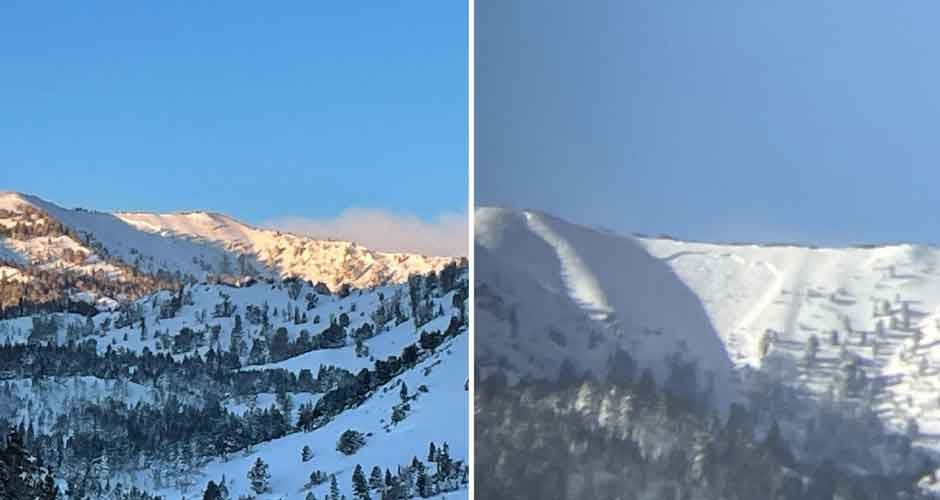Introduction
When it comes to mountainous regions and snow-covered landscapes, avalanches pose a significant risk to both human life and infrastructure. An avalanche occurs when a mass of snow, ice, and debris slides down a slope, often with devastating consequences. In order to ensure public safety, authorities issue avalanche alerts to notify people of potential risks and the need for precautionary measures. In this article, we will explore the concept of “Alerta por Avalancha” (Avalanche Alert) and provide valuable insights into understanding and responding to these alerts. Let’s delve into this important topic to enhance awareness and preparedness.
What is an Avalanche Alert?
An avalanche alert, or “Alerta por Avalancha,” is a warning issued by relevant authorities to inform individuals and communities about the heightened risk of avalanches in a specific area. These alerts are typically based on weather conditions, snowpack stability, and other factors that contribute to avalanche formation. The purpose of an avalanche alert is to prompt people to take appropriate measures to minimize the risks associated with avalanches and to ensure their safety.
Understanding Avalanche Classifications
Avalanche alerts often include information about the classification or level of the avalanche risk. This classification system provides an indication of the potential danger and helps individuals assess the severity of the situation. The exact classifications may vary depending on the region or country, but they generally include the following levels:
Level 1: Low Risk
This level indicates a relatively low probability of avalanches. However, it is crucial to remain cautious and monitor the situation for any changes.
Level 2: Moderate Risk
At this level, the risk of avalanches increases, and individuals should exercise caution. It is essential to stay informed about the conditions and take appropriate measures to mitigate risks.
Level 3: Considerable Risk
Considerable risk signifies a significant probability of avalanches. People should avoid traveling in or near avalanche-prone areas and follow the guidance of local authorities.
Level 4: High Risk
This level indicates a high likelihood of avalanches, with dangerous conditions present in many areas. It is strongly advised to avoid any travel or activities in avalanche-prone regions.
Level 5: Extreme Risk
Extreme risk signifies the highest level of avalanche danger. It is characterized by widespread and potentially large avalanches. Traveling in or near avalanche terrain is extremely hazardous and should be avoided completely.
Responding to Avalanche Alerts
When an avalanche alert is issued, it is crucial to respond promptly and take appropriate actions to ensure personal safety. Here are some important steps to consider:
1. Stay Informed
Pay close attention to local news, weather forecasts, and official communications regarding the avalanche alert. Stay updated on any changes in the situation and follow the instructions provided by local authorities.
2. Avoid Avalanche-Prone Areas
If you live or are planning to visit an area under an avalanche alert, avoid traveling to or through avalanche-prone areas. These include steep slopes, gullies, and areas below cornices. Stay on designated trails and paths that are considered safe.
3. Assess the Terrain
If you are engaging in outdoor activities, familiarize yourself with the terrain and potential avalanche hazards. Understand the signs of unstable snow, such as recent avalanche activity, cracking, or whumping sounds. Avoid slopes with these indicators and choose safer alternatives.
4. Practice Safe Travel Techniques
If you must travel in avalanche terrain, ensure that you are equipped with the necessary avalanche safety gear, including transceivers, shovels, and probes. Travel with experienced companions, maintain proper spacing between individuals, and communicate effectively. Additionally, consider undergoing avalanche safety training to enhance your knowledge and skills.
5. Report Suspicious Conditions
If you observe any concerning or unstable snow conditions, report them to local authorities or avalanche forecast centers. Your information can contribute to the overall awareness and safety of the community.
Conclusion
“Alerta por Avalancha” plays a vital role in safeguarding lives and minimizing the risks associated with avalanches. By understanding avalanche alerts, familiarizing ourselves with the classifications of avalanche risk, and responding appropriately, we can enhance our safety and that of others. Remember to stay informed, avoid avalanche-prone areas, assess terrain conditions, practice safe travel techniques, and report any suspicious conditions. By following these guidelines and heeding the advice of local authorities, we can mitigate the dangers posed by avalanches and ensure a safer environment in mountainous regions. Stay alert, be prepared, and prioritize safety when it comes to avalanches.






